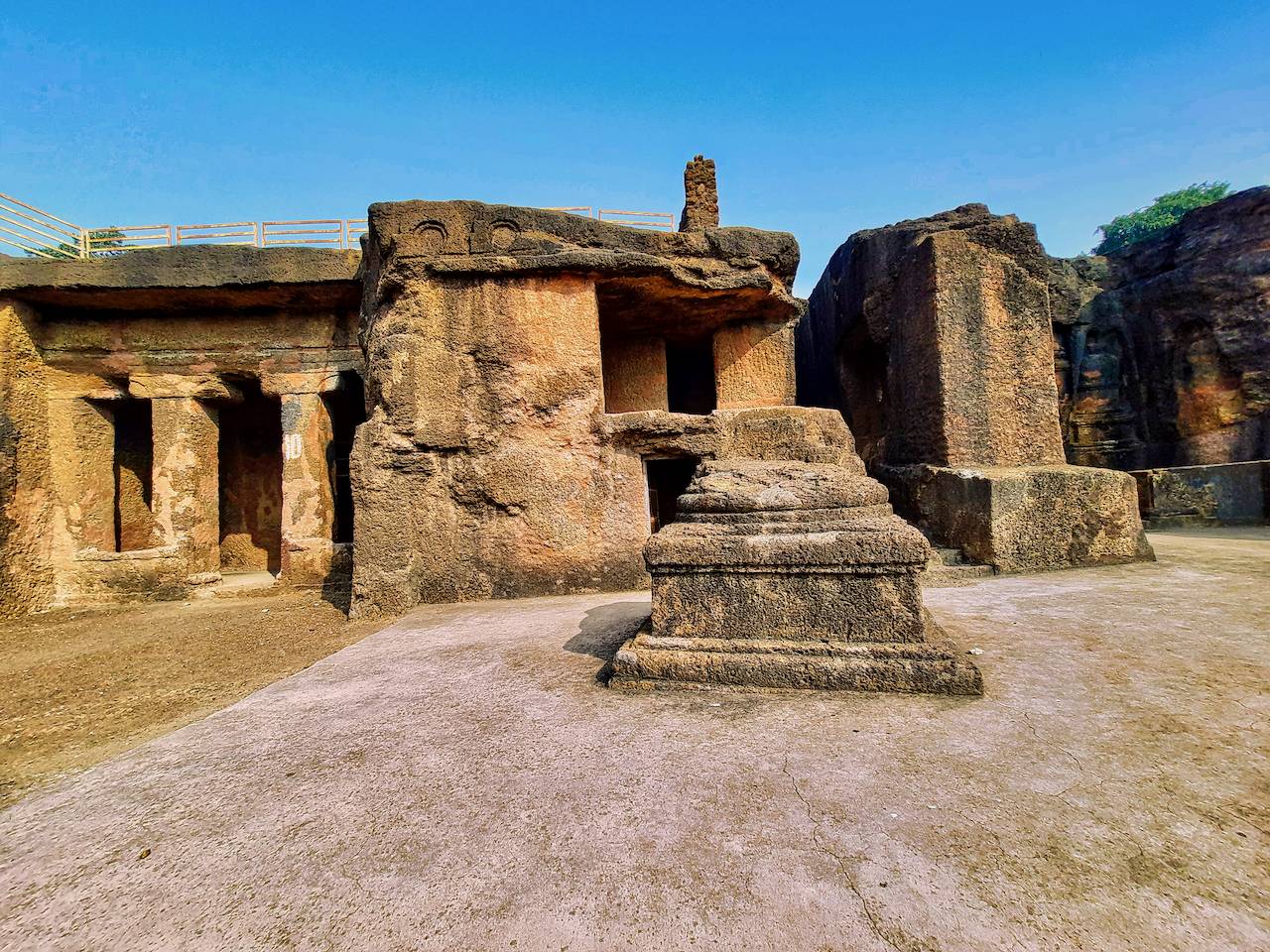The Dhamnar Caves are a group of rock-cut Buddhist caves located in the Indian state of Madhya Pradesh. These ancient caves date back to the 4th and 5th centuries AD, showcasing the rich Buddhist heritage of the region. They are known for their intricate carvings, beautiful murals, and architectural significance. The caves served as a monastic complex where Buddhist monks lived and practiced their faith. Over time, the Dhamnar Caves have attracted historians, archaeologists, and tourists alike, eager to explore their historical and cultural significance.
Get your dose of History via Email
Historical Background of Dhamnar Caves
The Dhamnar Caves were discovered in the 19th century by British officers during colonial rule in India. They were intrigued by the architectural marvels carved into the hillside. The caves are attributed to the Gupta period, known for its patronage of the arts and religion. The Guptas built these caves as a sanctuary for Buddhist monks. Over the centuries, the caves have witnessed various inhabitants and have stood as a testament to the region’s evolving history.
Local legends suggest that the caves were once a bustling center of Buddhist learning and worship. The caves were carved out of solid rock, reflecting the engineering prowess of the era. They consist of a series of chambers, halls, and monastic cells. The caves also feature a main chaitya, or prayer hall, which was central to the monks’ daily rituals.
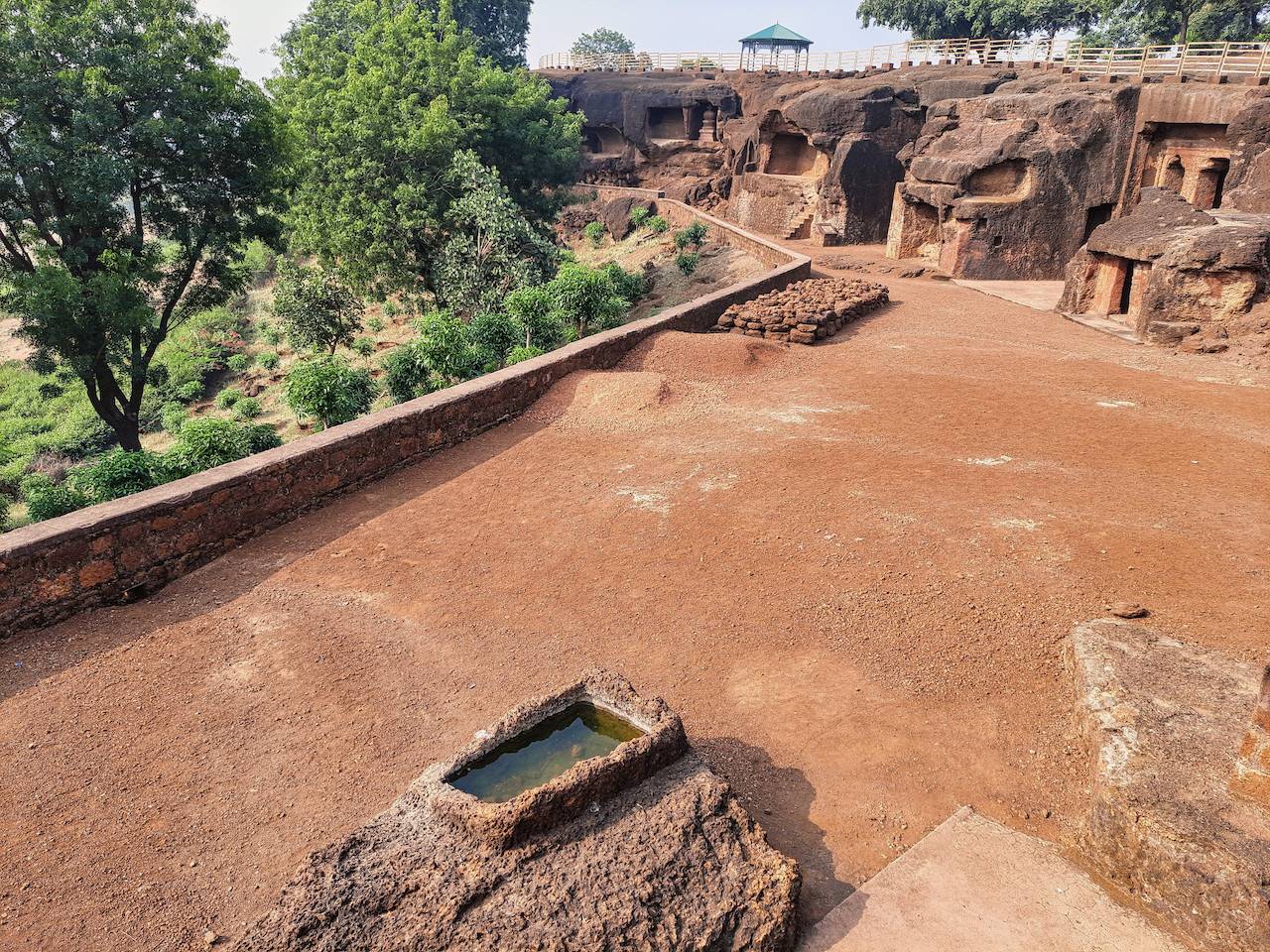
Throughout history, the Dhamnar Caves have seen periods of use and abandonment. After the decline of Buddhism in the region, the caves fell into disuse. They remained largely forgotten until their rediscovery. Since then, they have been the subject of various historical and archaeological studies, shedding light on their past significance.
The caves have not been the scene of any major historical events but have provided insights into the daily lives of Buddhist monks. The presence of inscriptions and carvings offers valuable information about the people who inhabited these caves. These inscriptions have helped historians piece together the timeline and cultural practices of the era.
Today, the Dhamnar Caves are protected under the Archaeological Survey of India. They continue to be a site of interest for those studying ancient Indian history and Buddhism. The caves are also a destination for tourists who come to marvel at the ancient craftsmanship and serene surroundings.
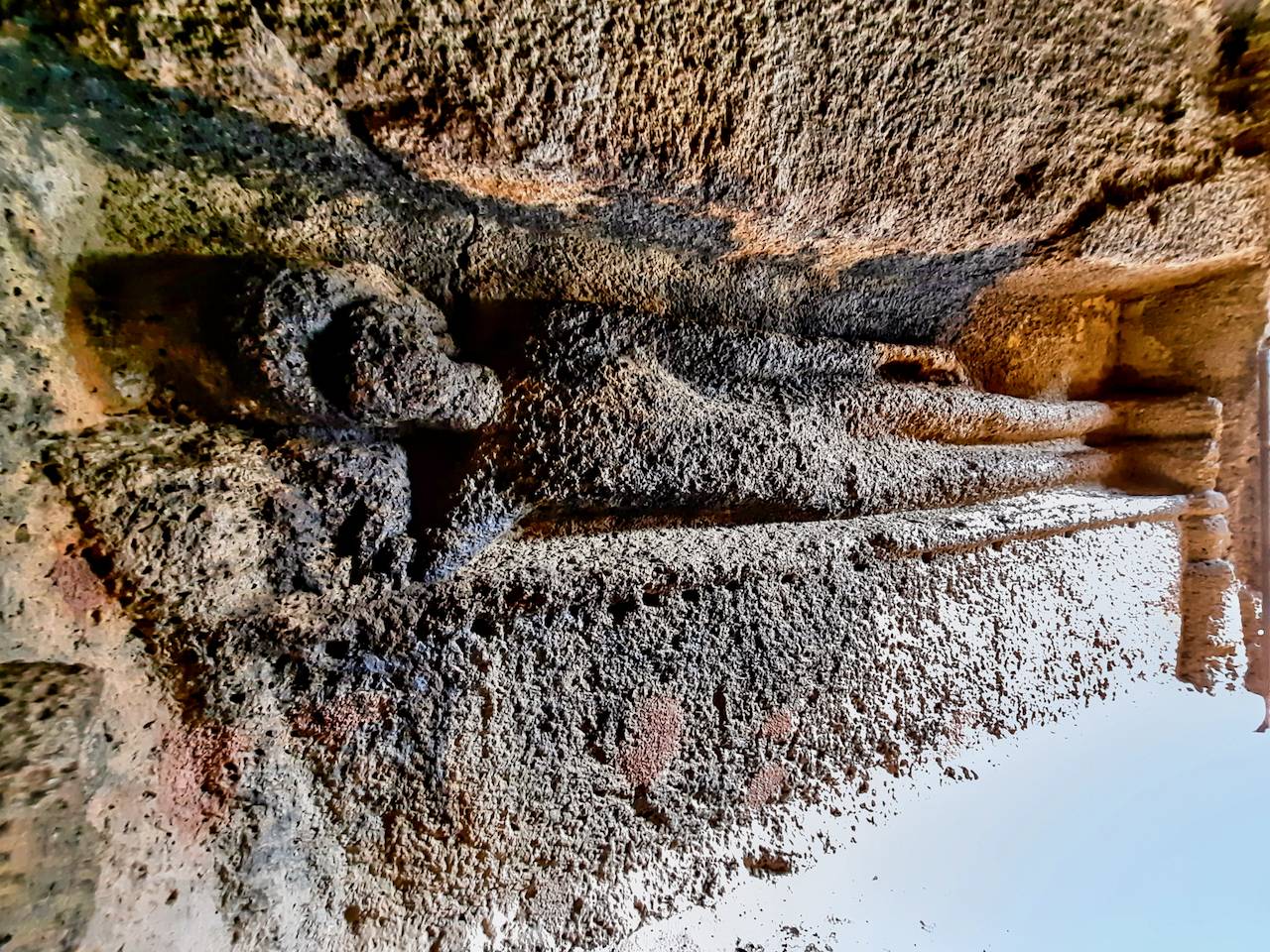
About Dhamnar Caves
The Dhamnar Caves are a complex of 51 caves, each with its unique features. The caves are primarily Buddhist viharas, or monasteries, where monks lived and meditated. The rock-cut architecture is a hallmark of the Gupta period, showcasing the skill and artistry of the craftsmen of the time.
The caves are made from sandstone, which allowed for detailed carvings and sculptures. The walls and pillars are adorned with depictions of the Buddha, Bodhisattvas, and various mythological figures. These carvings are not only religious but also artistic masterpieces that reflect the cultural milieu of the period.
One of the architectural highlights of the Dhamnar Caves is the chaitya hall. This hall features a stupa at one end, which is a hemispherical structure used for meditation and worship. The hall’s ceiling is vaulted, a design element that enhances the acoustic properties of the space, allowing for the resonant chanting of prayers.
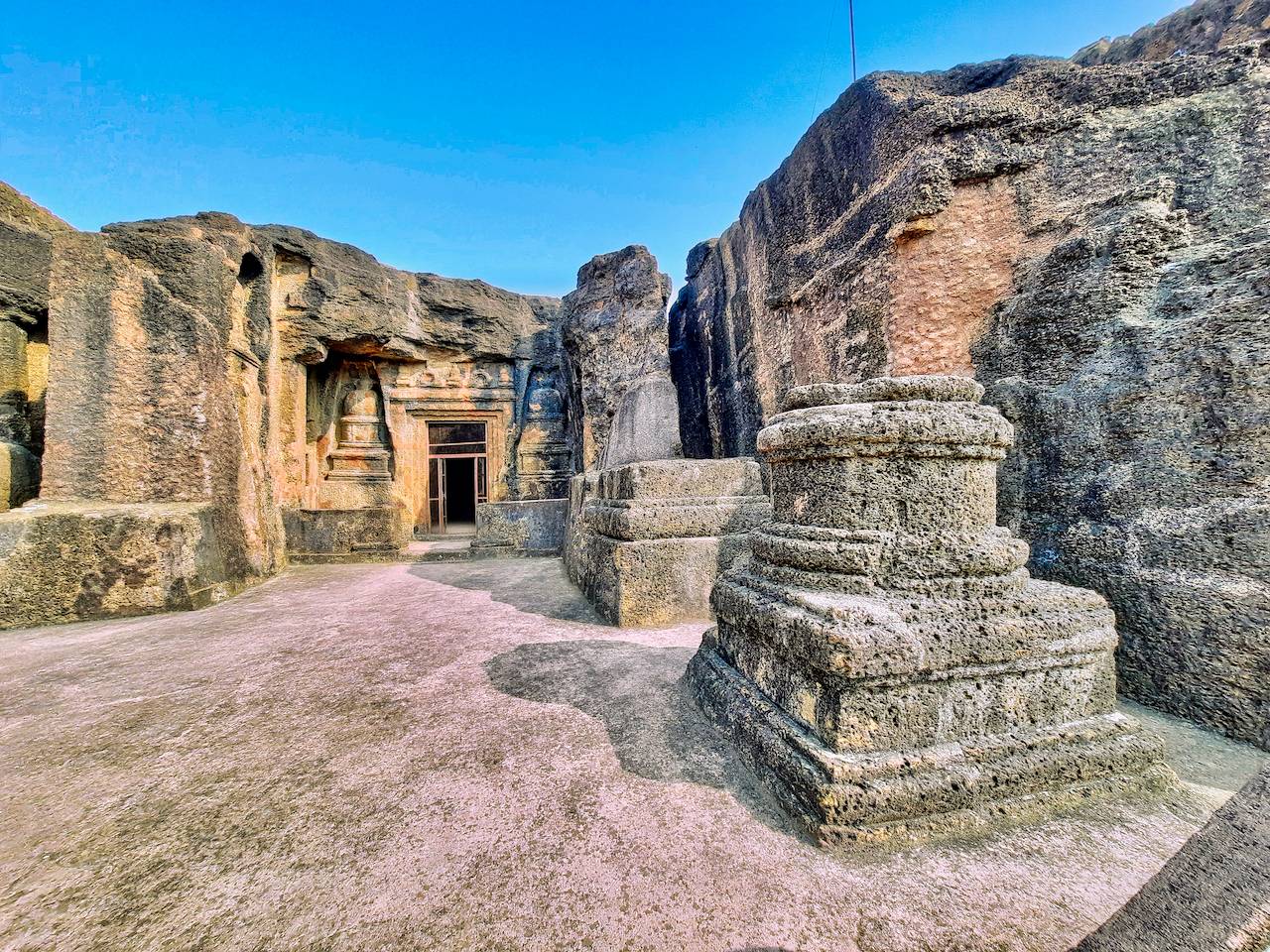
The construction methods of the Dhamnar Caves involved chiseling away the rock to create the desired spaces. This technique required precision and planning, as mistakes could not be easily rectified. The builders also had to ensure proper ventilation and light within the caves, which they achieved through strategically placed openings.
Despite the ravages of time, many of the murals and carvings within the Dhamnar Caves have survived. These artworks provide a glimpse into the aesthetic sensibilities and religious iconography of ancient India. Conservation efforts are ongoing to preserve these invaluable cultural treasures for future generations.
Theories and Interpretations
Some mysteries surround the Dhamnar Caves, particularly regarding the original patrons who commissioned their construction. While the Guptas are credited with their creation, the exact identity of the patrons remains unknown. The caves’ inscriptions have not provided conclusive evidence to solve this puzzle.
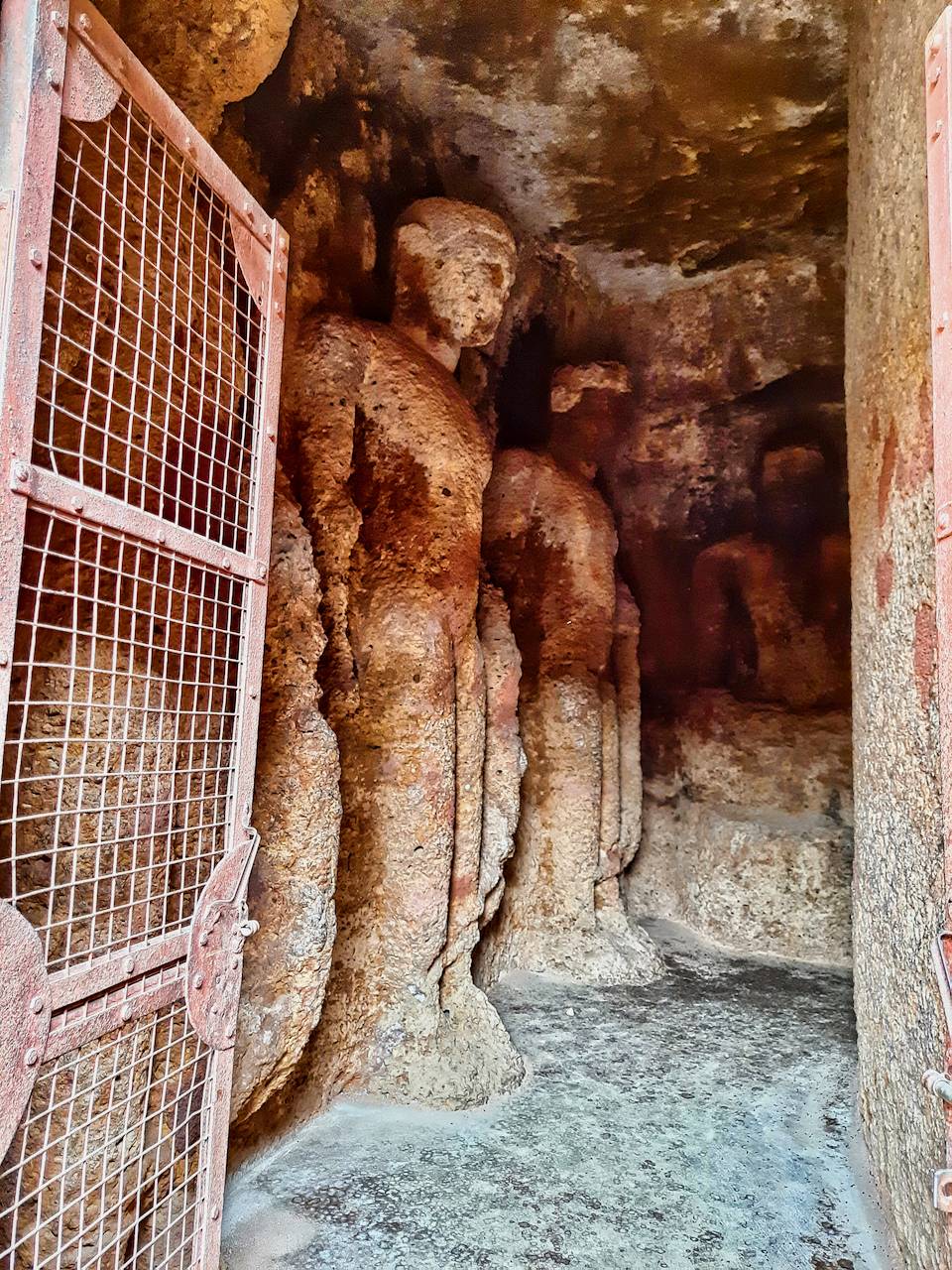
The carvings and murals within the caves have been matched to historical records and Buddhist texts. This has allowed historians to understand the religious narratives depicted on the walls. The iconography is consistent with Buddhist art from the Gupta period, which was known for its symbolic representations of enlightenment and the path to nirvana.
Dating of the Dhamnar Caves has been carried out using stylistic analysis and comparisons with other known Gupta-era sites. The consensus places the caves’ construction in the 4th and 5th centuries AD. However, precise dating remains challenging due to the lack of organic material that could be used for radiocarbon dating.
The interpretations of the Dhamnar Caves continue to evolve as new research sheds light on their history. Archaeologists and historians work to piece together the lives of the monks who once inhabited these caves and the broader context of Buddhism during the Gupta period.
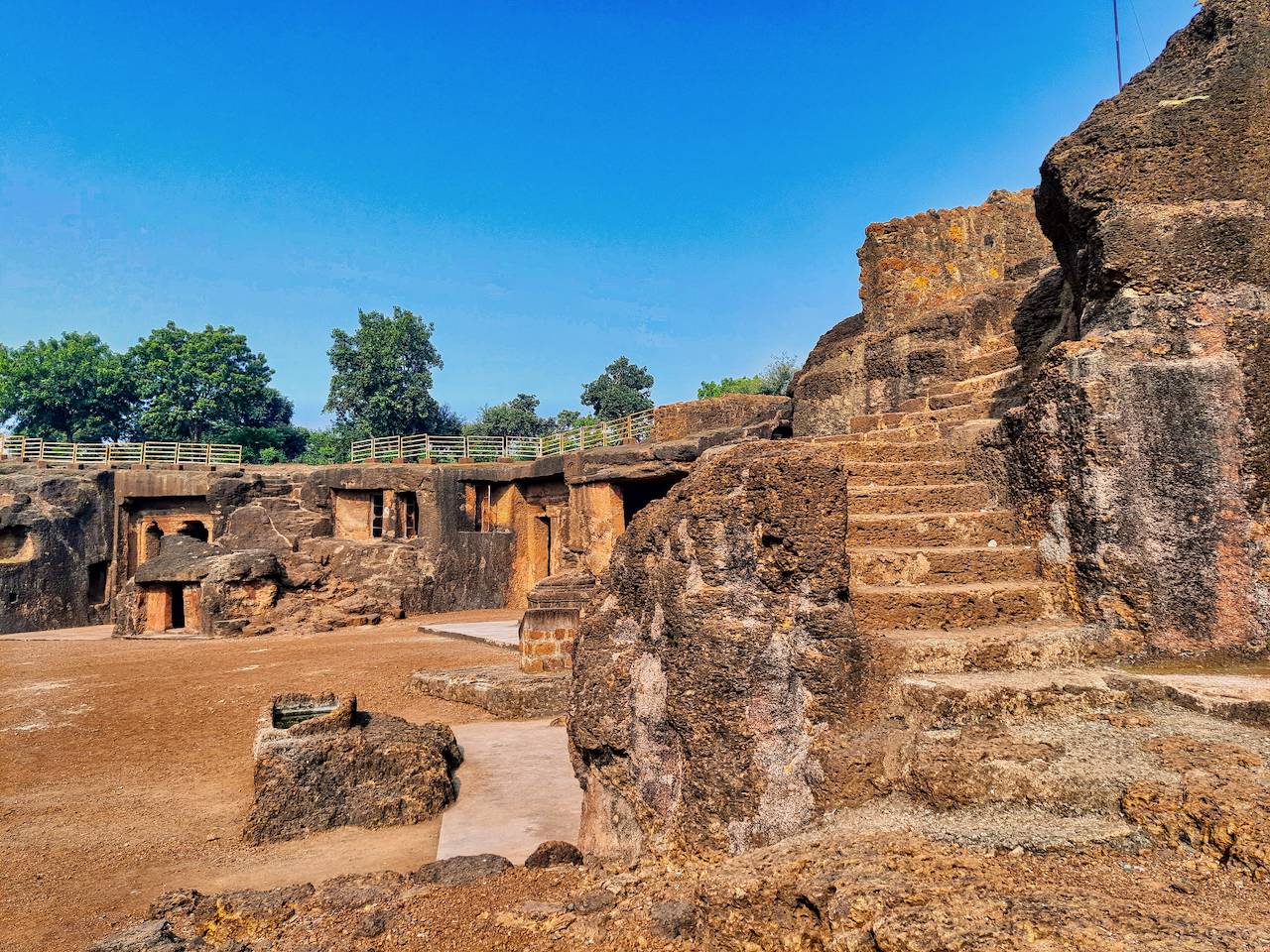
At a glance
Country: India
Civilization: Gupta Empire
Age: 4th-5th centuries AD
Conclusion and Sources
Reputable sources used in the creation of this article:
- Wikipedia – https://en.wikipedia.org/wiki/Dhamnar_Caves

